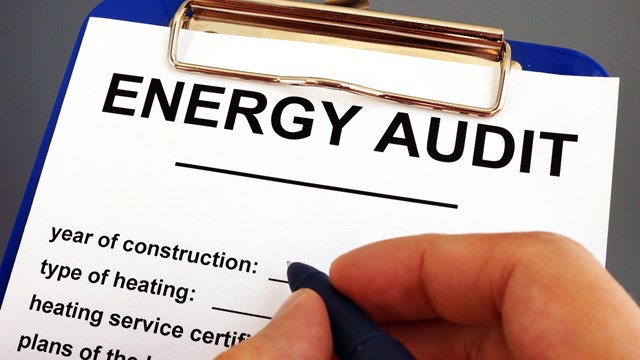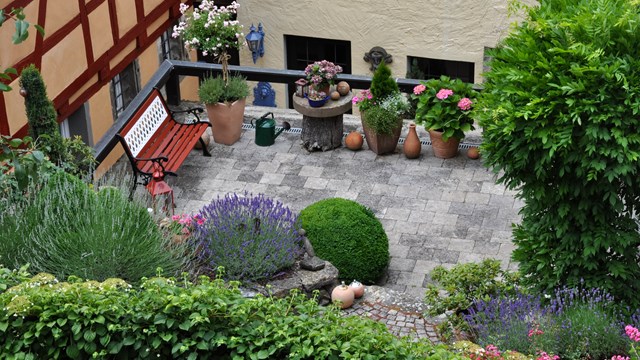
Green truly is the new black in New York City. As more and more co-ops, condos and HOAs look to save money as expenses rise, more and more boards, shareholders and unit owners are exploring ways to incorporate “greening” into their building community.
Green homes are expected to grow between 29 percent to 38 percent of the residential construction market by the year 2016, which is equal to $87 billion to $114 billion of that market, according to a 2012 McGraw Hill Construction study.
According to the U.S. Green Building Council, whose Leadership in Energy and Environmental Design program is the gold standard, the residential market—from multi- to single-family, from market rate to affordable housing, is reaping the benefits of using green building techniques. Since the launch of LEED for Homes in 2008, more than 30,000 homes have received LEED for Homes certification and nearly 93,000 are registered for certification. Over half of all LEED-certified homes are in the affordable housing category, the USGBC says.
While it's common for buildings or associations of any size to have designated committees in place to help boards and management handle aesthetic, social, and other community concerns, 'green' committees are a more recent trend—though one that is gaining traction all over the country as environmental consciousness is raised.
Recycling, energy and water conservation, composting, and improving landscaping techniques and methods are just a few of the things green committees may devote themselves to working on. Let’s take a look at how the latest trend has revealed itself in New York.
Green Initiatives
“Green” is a blanket term that covers a wide array of initiatives, ranging from something as simple as having the cleaning company use environmentally-friendly products to the installation of a green roof.
Whether or not to do a green initiative—to switch to LED lights, or install a green roof, or use the new paper insulation—is generally predicated on the bottom line. Co-ops and condos are businesses, after all, and are not inclined to invest in changes to the building unless the investment will save money over the long term.
Property managers report an increased interest in green initiatives of all kinds. “Right now we're seeing a great deal of interest in co-generation, solar panels, lighting retrofits, heat reclamation, green roofs, and living walls,” says Doug Weinstein, director of operations with Manhattan-based management company AKAM Associates.
One of the first green projects that boards green-light is lighting. “Lobby lights, stairwell lights…usually it’s just lights,” says Simon Sarwa of Trillion Asset Management in Brooklyn. “It’s usually done through the Con Edison program.” Lighting makes an ideal first green project because it’s easy to understand and pays for itself quickly.
Another one is janitorial. “Probably the easiest sustainability initiative to introduce first is the use of green products for building housekeeping,” says Weinstein.
Jeffrey Stillman, vice president of Stillman Property Management in Mamaroneck, has seen other ways for buildings to go green and save money. “A big area is water,” he reports. “Water rates have almost doubled in the last couple of years in Westchester.” Stillman has also seen co-ops and condos do conversions from oil to gas, upgraded insulation, and new windows.
“There are many facets of this—not just one answer. It’s endless. It all depends on the building, where it’s at and what they’re trying to accomplish,” says Sarwa. “Some only care about the bottom line. Some look at it as a quality of life issue. As managers, we like to present it from both sides.”
Some buildings are particularly cutting edge, as Weinstein can attest. “We’ve had many inquiries about wind turbines but there is no place to situate them and the number and size of turbines required to power minimal kilowatts to a building is prohibitive,” he says.
Committees & Resources
One place where boards and residents can turn to find out about greening their building community is GreenHomeNYC, ( www.greenhomenyc.org) a community-oriented, volunteer run organization that also serves as the New York City chapter of the Northeast Sustainable Energy Association (NESEA). GreenHome runs a host of programs, initiatives and green building tours, to promote the understanding of green building issues, to connect building owners with local green building services and materials providers, and also to help residential and commercial buildings go green. They run a program called “HouseCalls,” in which staffers provide information sessions about greening for co-op and condo boards. GreenHomeNYC volunteers in the HouseCalls program will come to a co-op or condo board meeting to give a short non-promotional presentation about what the building can do to be more energy-efficient.
As with other areas of interest, boards can enlist the help of residents to serve on green committees. “Some of the board members ask others in the building to help them, or the board members do it on their own,” Sarwa says. “It depends on the size of the building.” Bigger buildings, he says, will sometimes have a “task force” assigned to the issue—although he has not seen a big spike in green committees.
A committee might research ways that the building can save money by going green, as with retrofitting the lighting, or do its part to preserve the environment, as with swapping toxic chemicals for “green” cleaning products.
“A simple one that any building can do is the decision to use a green chemical concentrate system for building cleaning,” says Weinstein, who tells of a successful implementation in one of the buildings he manages. “Not only did it replace common chemical products with environmentally-friendly products, but using the concentrate system simultaneously cut costs and plastic waste as the containers are able to be refilled.”
With the environment such a hot topic, especially at the Mayor’s office, there are ample resources available to curious committee members. “Green committees seeking preliminary information can access literature on-line, and consult with LEED-certified professionals, green building consultants, and architects and engineers,” says Weinstein. His company “offers greening analysis and assistance. Our program advises clients about what’s available, what’s practical for their building, and what the likely costs would be.”
Getting Involved Locally
To get more detail, you need to hire an energy company, an architect or an engineer that do benchmarking or energy audit studies, Sarwa says. “I see the market slowly but surely emerging.” Energy audits are becoming more popular in New York now that the city has introduced its Greener, Greater Buildings Plan, which has established benchmarks for buildings to conserve energy.
Residents can get involved with their community in a positive way by starting a stand-alone green committee and also help the planet at the same time. One of the first—and easiest—ways that the green committees encourage residents to get involved is through your city or statewide recycling program.
The first step, according to Andy Padian, the vice board chair of NESEA, who also works with GreenHomeNYC and the New York City-based Community Preservation Corp., an affordable housing lender, is to conduct a comprehensive energy audit to analyze how much energy your building community is actually using.
Often residents get scared off when you start talking about greening their co-op, condo or HOA because they think it means “they’re going to have to slap solar panels on their building or buy a window.” That’s not it at all, he says. “I think what we want to encourage people about is that by making your building more sustainable is making it have significantly better cash flow.”
“I always say to owners in buildings—cash is green. Owners don’t look at fuel usage in their buildings, and their accountants don’t and their managing agents don’t,” says Padian. “NESEA as a group wants people to start counting. How much oil do you use? How much gas do you use? How much electricity do you use? And how does that compare to another building? What is your biggest bill? I’ve been coming into more and more buildings in New York City that their biggest bill is their water bill. And people are saying they can’t do anything about that.
“You can’t change aerators or showerheads or toilets? That’s easy stuff. We’ve had buildings where we’ve done that and we got 24 percent savings overnight,” Padian says. “It’s cheap and easy and fast.”
So a start is to “quantify everything.” Look at your oil, your electricity and your gas usage. Boilers, heaters, air conditioners, for example, all use a lot of energy. The average building, especially in the Northeast, spends 40 percent on utilities and water usage, he says.
Of course, recycling is a popular initiative but unit owners, boards and management groups have latched on to other eco-friendly measures and cost-saving strategies as well.
There are many things boards and residents can do on their own. Some ideas include installing high-efficiency heating and cooling equipment: well-designed high-efficiency furnaces, boilers, and air conditioners (and distribution systems) not only save the building occupants money, but also produce less pollution during operation. Secondly, you can install high-efficiency lights and appliances: LEED Lighting, fluorescent lighting has improved dramatically in recent years and is now suitable for homes as well as office buildings. High-efficiency appliances offer both economic and environmental advantages over their conventional counterparts.
Get the Board on Board
While residents may take the lead, it’s up to management and the board to be as supportive as possible of green initiatives.
Padian says he believes it’s best to establish a separate committee or a subcommittee outside of the board. The green committee should perhaps include an architect, an engineer, scientist or building professional, along with residents, to do the proper research and then make a recommendation that could be brought formally before the board.
The key in whatever they do is to create programs the green committee and the board are committed to implementing. Then create programs that can be easily incorporated into the daily lives of the homeowners, provide support for questions and educate the importance and the impact everyone can make.
Once one or two people decide to form a green committee, they can turn to the state to see if any incentives are available to help.
If your green committee is looking for a more holistic approach or a green building certification, then they can get help from the three most popular building certifications: LEED with the U.S. Green Building Council, Green Globes or Energy Star. Currently, Energy Star does not have a multi-residential certification, but is expected to have one in 2013. Energy Star is also focused on energy only, rather than complete sustainability. LEED and Green Globes look at all building components in addition to other eco-friendly moves such as air quality and landscaping.
Another role green committees play is communication. Residents can be resistant to change, especially when it comes with a large price tag up front. The committee can help explain why such programs make sense.
“Educating shareholders/unit owners about sustainability and greening in residential buildings is the first step in a successful campaign to bring eco-friendly programs into a property,” Weinstein says. “A smooth campaign would include either a written or informational-meeting introduction to a desired project so building owners/residents can understand why the initiative is a good idea for the building, how it will make the building a more desirable place to live/own, and how it will make the building a better citizen of the planet.”
It is vital that communication does not cease once the project is approved. “Once it has been determined to move forward with a project, communication must continue and must include timelines shared in advance with all unit owners/shareholders and residents so they will know what to expect, especially if it will impact their own apartments,” Weinstein says. “Significant timeline benchmarks should be published, and progress reports should be distributed. If it is a major project, the board may wish to announce it to the media to promote the building’s commitment to a sustainable future.”
The Manager's Role
The green committee and the board can only do so much. As with so much of what buildings do, property managers take a leading role in green initiatives. Often, it is at the urging of management that green initiatives are taken in the first place, Sarwa says. Managers, after all, are up on what’s being done in other buildings.
But even in the impetus lies with the board or a green committee, managers play a vital role. “We would do all the legwork,” Sarwa says, “depending on the route they wanted to take.”
In particular, managers can be helpful with the twin challenges of planning and budgeting. “The two biggest issues are physical logistics and costs,” Weinstein says. “Boards and greening committees can compile a sustainability wish-list for their building and then consult with management regarding the practicality and cost of moving forward.”
As Sarwa noted, good managers will know what works and what doesn’t, what makes sense and what doesn’t, what the city will require and what it won’t, and, most importantly, what will save money and what will not. For example, Local Law 87, passed last year, requires an ASHRAE Level II energy audit and retro-commissioning study of base building systems for buildings larger than 50,000 square feet. Energy Efficiency Reports are due once every 10 years with the first reports due this year on a staggered schedule.
“Once a project is decided, it is the responsibility of management to ensure that it proceeds smoothly, and to keep the board, building owners, and residents apprised of progress and significant benchmarks and timelines,” says Weinstein.
It only takes one or two or a handful of residents per building to form a green committee but doing so can make real changes to your homes, the planet and your community’s bottom line.
Greg Olear is a freelance writer and a frequent contributor to The Cooperator. Managing Editor Debra A. Estock contributed to this article.






Leave a Comment